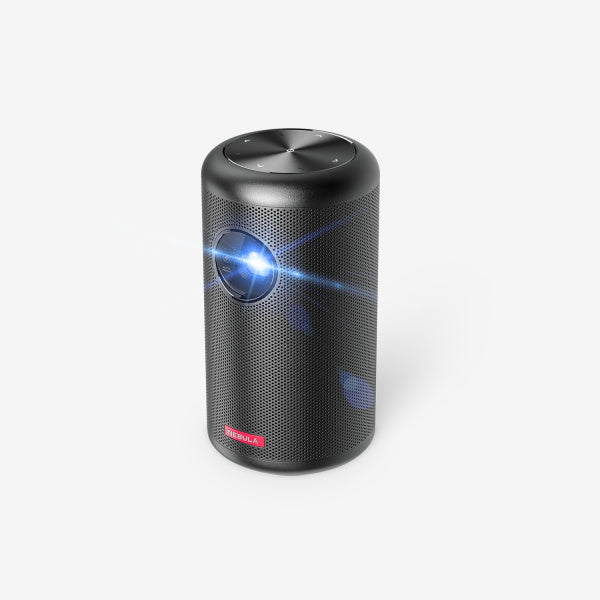Delving into the technological world of superior resolution arenas, Full HD (FHD) and
Ultra HD (UHD) emerge as significant names. In this article, we will explore these two display resolutions and discover what characterizes FHD vs UHD, demystifying their differences, and guiding you through the best projectors available for both. Embrace the journey towards a crystal clear understanding of these popular, high-resolution formats. Let's begin!
What is FHD
What is FHD? Full High Definition (FHD), also referred to as 1080p, is a display resolution of 1920 x 1080 pixels. In relation to FHD meaning, this term is commonly used in television and other media to describe a picture's quality.
Pros
-
FHD televisions and monitors are usually more affordable than their
UHD counterparts. This is one of the best parts of what is FHD resolution.
-
Most media, TV shows, and web content are developed in 1080p, making FHD devices highly compatible.
-
FHD requires less powerful hardware, uses less battery power, and has lower bandwidth compared to UHD.
Cons
-
Compared to UHD, FHD 1080p has a lower resolution, so the image quality won't be as crisp or detailed, especially on larger screens.
-
As technology continues to evolve, more content will be available in higher resolution formats such as UHD and 4K, resulting in FHD potentially becoming obsolete between FHD versus UHD.
What is UHD
UHD (Ultra High Definition) has a display resolution of 3840 x 2160 pixels, four times (4x) higher than standard FHD displays. Often, UHD is mistakenly referred to as 4K, but technically, 4K is a professional production standard that includes a resolution of 4096 x 2160 pixels.
Pros
-
With four times the resolution of FHD, UHD provides a much clearer, detailed, and sharper image. This is especially noticeable on larger screens or when sitting closer to the screen.
-
The heightened level of detail from UHD displays makes for a more immersive viewing experience, improving the overall entertainment value.
-
Most new content, particularly movies and games, is being created in 4K or higher, making UHD a wise investment for the future.
Cons
-
UHD TVs and monitors are generally more expensive than FHD alternatives.
-
UHD represents a significant step up in terms of the processing power, graphics capabilities, storage, and bandwidth it requires, which can be a constraint for some users.
-
Although more 4K content is being made, there is still a lot of media only available in 1080p or lower resolutions.
Differences Between FHD and UHD
1. Resolution
The key difference between FHD vs Ultra HD lies in the resolution. FHD has an amazing 1920 x 1080 pixels resolution, whereas UHD has a 3840 x 2160 pixels resolution. UHD has four times the number of pixels as compared to FHD, thereby providing a more detailed and crisp image.
2. Cost
Between Full HD vs Ultra HD, FHD devices are usually cheaper compared to UHD, making them a more affordable choice.
3. Hardware Requirements
The difference between FHD and UHD is that UHD requires more powerful hardware to display the higher resolution, as well as more bandwidth when streaming and more storage for files.
4. Content Availability
UHD or FHD? Most existing content is still in 1080p or lower resolution. However, this is rapidly changing with more and more 4K content being made available.
5. Future-Proofing
A UHD device is more future-proof than an FHD device, as it supports higher-resolution content that will become more commonplace as technology continues to evolve.
6. Ideal Uses
FHD is suitable for regular home or office use for functions such as web browsing, document reading, and viewing standard HD media content.
Best FHD Projector
Meet the
Nebula Cosmos, one of our top-notch MODELS in
1080p projector lineup! Experience a visual treat like never before with the Nebula Cosmos projector. Witness a stunning 1080p (4K supported) display and 810 ANSI Lumens image, featuring HDR10 technology to deliver movies, sports, games, and more in vivid detail and clarity. Bright colors and deep blacks perfectly complement the blockbuster picture, taking your enjoyment to the next level.
Why settle for a 60-inch TV when Nebula Cosmos offers an enormous 120-inch screen for a true cinematic experience? With an adjustable digital zoom and automatic 4K-supported upscaling through Hybrid Log Gamma (HLG), every detail comes alive. In addition, three Dolby Digital Plus-powered speakers deliver immersive 360° sound, and Android TV 9.0 grants access to over 7,000 apps, such as Prime Video, YouTube, and Hulu. Elevate your entertainment with the Nebula Cosmos projector.
Best UHD Projector
Discover the epitome of cinematic pleasure with the Nebula
Cosmos Max, where superior quality meets versatile functionality. This 4K UHD projector from our
projector lineup immerses the audience in its lifelike visuals, recreating the true cinema experience right in your living room. From your favorite movies to sports events and games, everything is accentuated in breathtaking detail. Its unique sound capabilities, powered by Dolby Digital Plus and Sound Dimension, deliver a stunning 360° 3D auditory experience, deepening your engagement with the content you love.
Apart from the stunning visual and sound quality, the Nebula Cosmos Max takes user convenience to a new level. Imagine adjusting the image size without moving the projector, made possible by the built-in digital zoom. Unleash its potential with a colossal 150-inch projection, or go intimate with a click on the remote. It revolutionizes your viewing experience by upscaling non-HDR content in real-time, breathing new life into old DVDs and live TV broadcasts. Offering unlimited access to over 5000 apps like Hulu, Disney+, HBO, and more through Android TV, this projector ensures that you never run out of entertaining content. Upgrade to the Nebula Cosmos Max for a blend of aesthetic visuals, robust audio, and unrestricted entertainment.
Conclusion
To wrap it up, choosing between FHD and UHD won't just shape your multimedia experience, but serve as a pledge of your commitment to a high-definition future. Be it cinematic epics or masterly video games, the decision makes a world of difference. Around this debate, observe not just the present use, but foresee the flourish of 4K content. Hence, when contemplating over FHD vs UHD, remember, the right choice signals not just a leap forward in viewing experience but an upgrade to a more pixel-perfect reality!
FAQ
Below are some frequently asked questions about FHD vs UHD.
Which has higher quality: HD vs FHD vs UHD?
HD vs FHD vs UHD, which will win? UHD (Ultra High Definition) has the highest quality among these three. HD (High Definition) is typically 1280x720 pixels, FHD (Full High Definition) is 1920x1080 pixels, and UHD is 3840x2160 pixels. Thus, with around four times the resolution of FHD, UHD provides superior sharpness, clarity, and detail.
Can the human eye tell the difference between 1080p and UHD?
Yes, the human eye can perceive the difference between UHD and what is 1920x1080 resolution (FHD) looks like. However, it depends on the screen size, viewing distance, and the viewer's individual vision. Larger displays and closer viewing distances make the increased detail of UHD more apparent. However, for smaller screens or greater viewing distances, or for individuals with less-than-perfect vision, the difference might not be as noticeable.

































